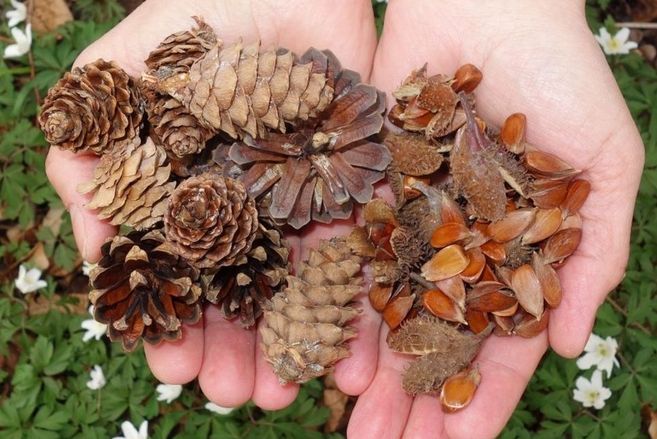

Institut für
FG Forstgenetik
Aktuelles

Die Rotbuche ist die bedeutendste Laubbaumart in Deutschland. Mit neuen Protokollen lassen sich Rotbuchen in der In-vitro-Kultur etablieren und für die vegetative Vermehrung oder biotechnologische Forschung nutzen.

Vom 17. bis zum 26. Januar 2025 hat das Thünen-Institut für Forstgenetik seine aktuelle Forschung zur Anpassung der Wälder an die Klimaänderungen einem breiten Publikum in Halle 23a präsentiert.

Die Roteiche hat viele entscheidende Stärken für den klimastabilen Umbau unserer Wälder. Die diesjährige Wahl zum Baum des Jahres bietet aber auch Stoff für Diskussionen, da die Roteiche in einigen Kreisen als invasiv eingestuft wird.
Institutsleitung
Stellvertretende Institutsleitung
Sekretariat Großhansdorf
Sabine Warschus
Standortleiter Waldsieversdorf
Sekretariat Waldsieversdorf
Institut für
FG Forstgenetik
22927 Großhansdorf
Standort Waldsieversdorf
15377 Waldsieversdorf
Publikationen
- 0
Zahn V, Fendel A, Sievers A-J, Fladung M, Brügmann T (2025) Benefiting from the past: establishing in vitro culture of European beech (Fagus sylvatica L.) from provenance trial trees and seedlings. Plant Methods 21:31, DOI:10.1186/s13007-025-01350-3
- 1
Wodtke S, Fendel A, Brügmann T (2025) Brush them away : a simple method to remove trichomes and visualize stomata. Mar 24, 2025. Berkeley: protocols io, DOI:10.17504/protocols.io.kxygxwjqwv8j/v1
- 2
Eisold A-M, Bubner B, Blunk V, Schneck V (2025) Detection of Hymenoscyphus fraxineus in leaf rachises from European ash (Fraxinus excelsior) in Germany. Forests 16(1):149, DOI:10.3390/f16010149
- 3
Pakull B, Degen B, Schröder H, Riedel T, Mader M, Liesebach H, Hoffmann P, Hoppe S, Eusemann P (2025) Hybridization, spatial genetic structure and potential environmental preadaptation in Quercus robur and Quercus petraea in Germany - results from the 4th National Forest Inventory. Tree Genetics Genomes 21(2):11, DOI:10.1007/s11295-025-01695-9
- 4
Burghard V, Wende S, Schneck V, Ulrich A (2025) Inoculation of Fraxinus excelsior seedlings with bacterial strains to enhance the tolerance against ash dieback. J Plant Dis Protect 132(1):9, DOI:10.1007/s41348-024-01014-9





